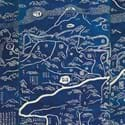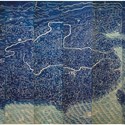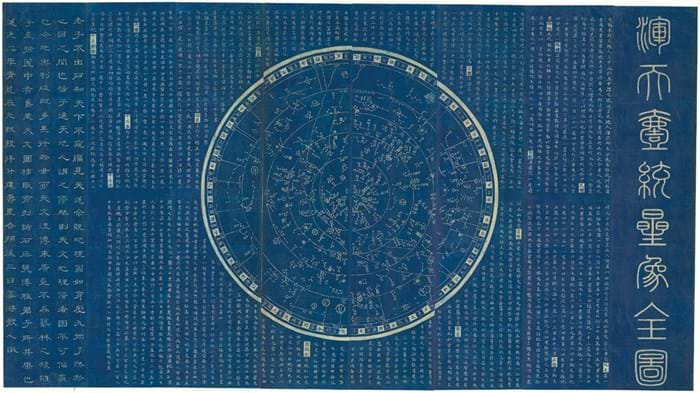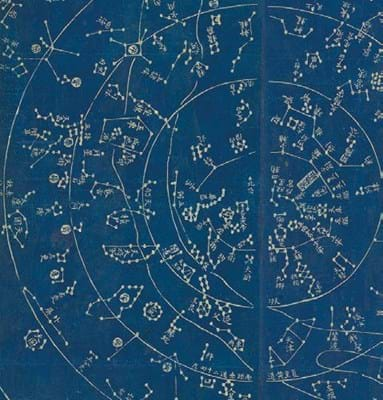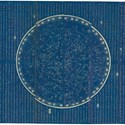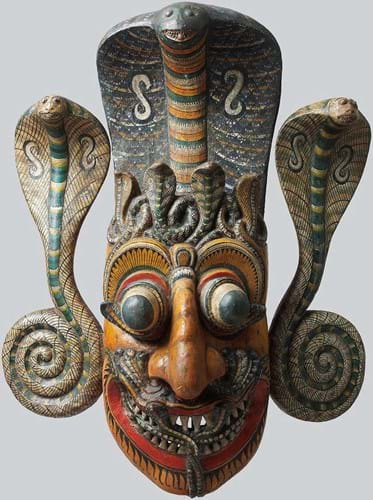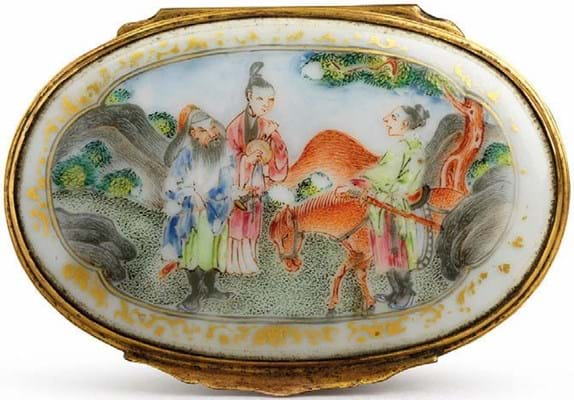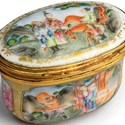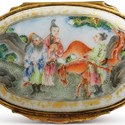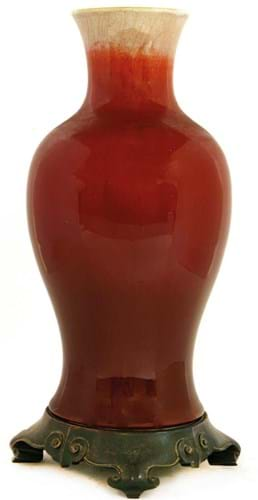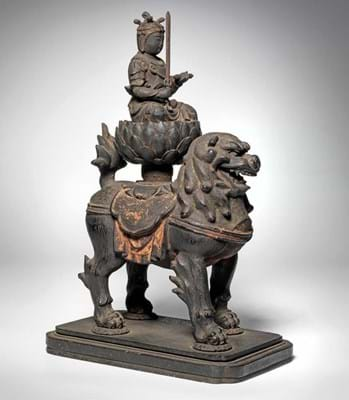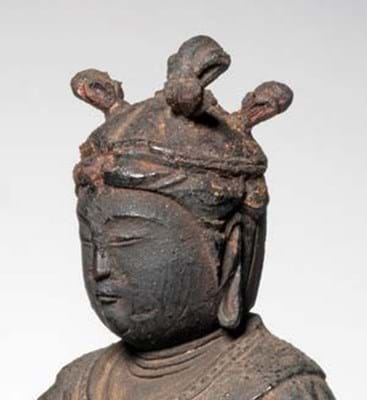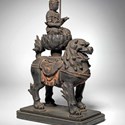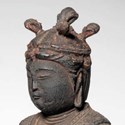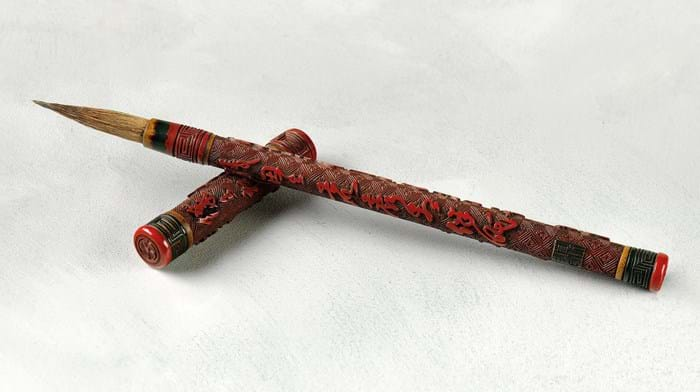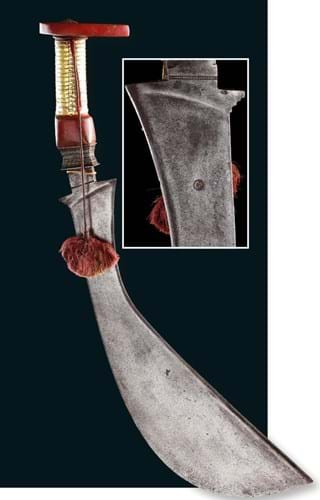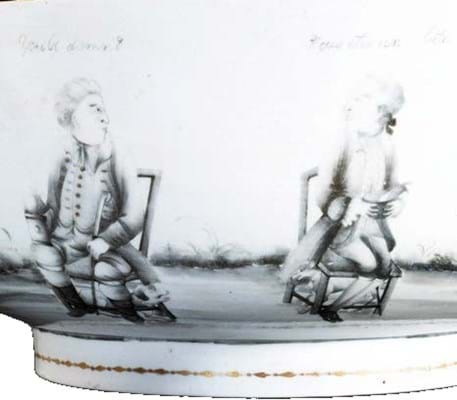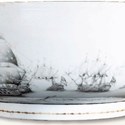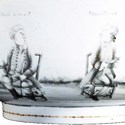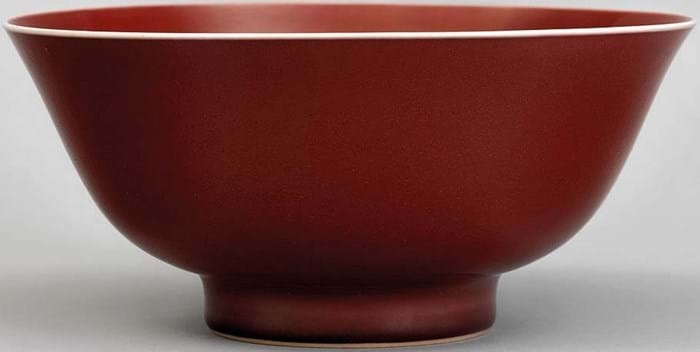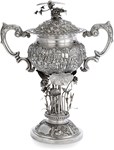The land, sea and sky according to the Qing
Monumental woodcuts of the earth and heavens
Daniel Crouch Rare Books: £400,000 each
The title of this large woodcut map above, translating as The Complete Geographical Map of the Everlasting Unified Qing Empire, suggests it was as much a political as a geographical record.
Based on research originally presented to the Qianlong emperor by the cartographer Huang Qianren in 1767, it shows China as the Qing would wish it to be remembered: the physical, political and cultural centre of the world.
Borders are vague and foreign entities inhabit the fringes. To the upper left of the map are both the Mediterranean or Small Western Ocean, and the Atlantic or Great Western Ocean, with Holland and England depicted as islands.
No example of Huang Qianren’s original work survives (a painted copy was produced in 1800 and now resides in the Beijing National Library). This map is a revised and enlarged version printed during the reign of the emperor Jaiqing (1796-1820), c.1811.
It was printed in 16 sections on eight sheets in two colours (black and white and blue and white, as here) and measures 4ft 4in x 7ft 4in (1.33 x 2.23m).
Its ‘pair’ of a similar monumental size is a celestial chart, Huntian yitong xingxiang quantu, printed for Jaiqing’s successor Daoguang (1820-50). A Qing interpretation of Southern Song learning, it too carries an overt political message: the bestowing of the Mandate of Heaven on just rulers of China.
Unlike the 12 houses of the zodiac devised by Western astronomy, Chinese astronomers identified 28 divisions in the sky known collectively as the Ershi ba xingxiu that were used to measure the coordinates of celestial bodies and constellations along the equator.
Three different states of this planisphere are known, each with slight differences in terms of the textual content and layout. This example is dated for the second year of the Daoguang reign (1822).
Daniel Crouch Rare Books has recently reunited the two maps and they will be offered for sale at £400,000 each.
A new Japanese imperial era
Lacquer figure by Kazunaga Shintaro
Simon Pilling: in the region of £5000
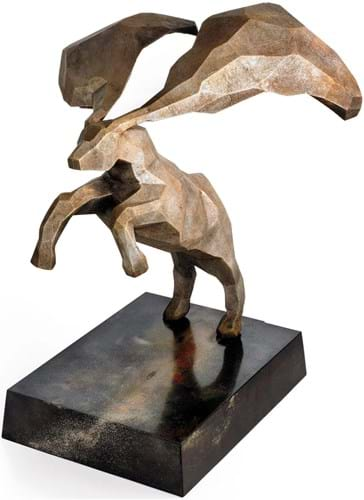
Defying Gravity, a dry lacquer figure of a deer by Kazunaga Shintaro, priced in the region of £5000 by Simon Pilling.
With the recent accession to the chrysanthemum throne of emperor Akihito's elder son Naruhito, 2019 marks the beginning of a new Japanese imperial era. The Reiwa – interpreted as ‘beautiful harmony’ – replaces the Heisei period and becomes the fifth imperial era since the end of the Tokugawa Shogunate.
Reiwa is the title of Simon Pilling’s show that features objects from the Meiji period to the present day. At the beginning of this new era he asks: how will today’s young artists take the story forward?
Defying Gravity, a 12in (30cm) high dry lacquer figure of a deer, is by Kazunaga Shintaro (b.1990), a graduate of the Tokyo University of the Arts, the Gedai. His words describe his artistic inspiration:
“Lacquer has been intertwined with the history of the Japanese people for so many centuries that one could claim it is etched into our DNA. It requires a high level of skill and patience to produce. In my works, I try to find a way to bring the modern production methods in touch with the arduous methods of old. My designs are digitally drawn in computer software, but then executed entirely manually.”
This figure of a deer – the traditional messenger of the gods of longevity – assumes a fractal form, a conscious reference by Kazunaga to early computer-generated imaging when games had to compensate for a lack of processing power in the modelling of their characters.
It is priced in the region of £5000.
Indian ritual art transformed
19th century Sri Lankan Raksha mask
Joost van den Bergh: £8500
Painted in vibrant colours with protuberant eyes and tongues, Sri Lankan Raksha masks are apotropaic – intended to ward off evil. They form part of the Raksha Kolama dance ritual, which pays tribute to the Rakshasas, the mythical devil race of the Hindu epics whose people could assume 24 different forms.
Some of these transformations were enacted in performance, including the Naga Raksha or cobra demon depicted in this exceptionally large 2ft 8in (80cm) 19th century mask.
It is offered for £8500 at Joost van den Bergh’s exhibition Perfect Presence: Tantra, Jain & Hindu ritual art from India (October 31-November 8) at Redfern Gallery on Cork Street.
The exhibition, focused on the mystical philosophy of Tantra, is accompanied by a 136-page catalogue with specially commissioned articles and information about the offerings in the show.
The Romance of the Western Chamber
Qianlong snuff box
Jorge Welsh: priced from £6000
The scenes painted to this Qianlong period porcelain and gilt metal snuff box are taken from the Romance of the Western Chamber, the most famous Chinese dramatic work written by the Yuan dynasty playwright Wang Shifu.
The 21-act saga takes place during the Tang dynasty and recounts the occasionally racy love story between a poor and young scholar and the beautiful daughter of a court official.
Dealer Jorge Welsh has identified the three scenes on the 2½in (7cm) wide box that are probably taken from woodblock prints. To the lid are the two protagonists, Zhang Sheng and Cui Yingying, with the military leader General Du. The scene to the front shows Zhang Sheng sending a letter to the general seeking assistance against the troops of the local bandit Sun Biao, while to the back Sun finally gets his comeuppance.
The story ends on a happy note. Zhang Sheng is appointed to high office and the two are finally married.
Snuff boxes in the exhibition are priced from £6000.
She danced for Queen Victoria
Kangxi sang de boeuf vase
Sworders: £2000-2500
This Kangxi (1662-1722) period vase with a sang de boeuf glaze comes for sale from a direct descendant of Countess Eleanor Golferelli (1882-1988).
The child actress turned music hall star, who danced for Queen Victoria in the Drury Lane Theatre in 1888, enjoyed a remarkably rich and long life. In the early 1900s, as wife to the pioneering brain surgeon Lt Col Dr Alfred Hull and mother of twins, she travelled extensively around India, south-east Asia and the Far East.
Later in life, after discovering her second husband, an Italian aristocrat Count Golferelli, was a bigamist, she fled back to England. Living in St John's Wood in north London, she became an international buyer for the John Lewis partnership where she worked until she was 90.
Eleanor gave the 15½in (39cm) high vase, with its distinctive crackle-suffused glaze of deep strawberry colour, to her grandson, Anthony Gaisford Hull, as a wedding present in 1966. He kept it in his home in Harrow until he passed it to his son when he married in 2003.
It carries an estimate of £2000-2500 at Sworders’ sale of Asian art held at The Westbury Mayfair hotel in London on November 8.
The 15in (39cm) vase dates from the first flowering of the famous ox blood glaze that was developed in the Jingdezhen porcelain kilns during the last years of the Kangxi period (c.1705-10).
A hairstyle that recalls a sacred site
Wood temple sculpture of Gokei (Five-Topknot) Monju riding a shish
Sydney L Moss: £60,000
The cult of Monju, the bodhisattva of transcendent wisdom, first crossed from China to Japan in the 9th century.
Its carrier was a Japanese monk named Ennin (794- 864) who – sent as a delegate to glean knowledge about the flourishing Tang dynasty (618-907) – had been inspired by the devotion to Monju he encountered at the sacred sites of Wutaishan (Mount Wutai). On his return to Kyoto, he built Japan’s first temple dedicated to the deity.
Although in its new surroundings the iconography of Monju evolved across the centuries, one curious and very Chinese attribute remained: his coiffure. Monju’s five topknots, clearly seen here (inset) to a Japanese wood temple sculpture from the 14th or early-15th century, are a reminder of the five flat peaks of Wutaishan and a hallowed place of enlightenment.
The 9in (22cm) sculpture, acquired by Mayfair dealership Sydney L Moss in Japan, has a price tag of £60,000.
The tools of the scholar
Ming lacquer brush and cover
Eskenazi: $125,000
This finely carved Ming dynasty lacquer brush and cover from the 16th or early 17th century is one of the objects on offer at Eskenazi’s Room for Study: Fifty Scholars’ Objects exhibition from October 31 to November 29.
An inscription includes a poem by Lu Lun (739-799 AD), together with the name Huang Ruheng (1558-1626) who presumably owned the brush. Ruheng was a late Ming calligrapher and poet who was a native of Hangzhou and held an official post in Jiangxi.
Some of his calligraphy, inspired by Song masters, was included in the Ming dynasty painting and calligraphy album, Tangshi Huapu (Paintings of Tang Dynasty Poems). The asking price is in the region of $125,000.
The Rolls-Royce of Indian weaponry
Ceremonial ayda katti
Runjeet Singh: £8500
An ayda katti is the traditional sword of the Kodavas of Coorg, the modern-day state of Karnataka in south-west India.
The original function of the hatchet-shaped weapon was to cut through dense undergrowth, but this 18th or 19th century example, and others like it, were largely for ceremonial rather than for practical use.
Visible on one face of the blade is a stamp containing a stylised letter E. A label accompanying the sword reads Ex Lord Rolls coll. Stratford/A August 62 £3 – prompting the suggestion that it was once owned by Lord Charles Rolls. The date links it to when his sister Lady Eleanor Shelly-Rolls died in 1961.
An ayda katti with similar decoration at the hilt is in the Powys Castle and Garden in Wales collection as part of the National Trust Collections
Dealer Runjeet Singh first bought the 22in (55cm) sword in 2013 from a Yorkshire dealer who had bought a group of arms and armour in the Midlands. He sold it to an American collector but was happy to buy it back recently. The asking price is £8500.
As long as it’s a boy
Qianlong Yingxitu vase
Sotheby’s: £150,000-250,000
In Chinese culture yingxitu (pictures of boys at play) and baizitu (pictures of ‘hundred boys’) are intimately connected with the strong desire for male offspring, who would perform ancestral sacrifices and thus endure the continuation of the family line.
Depictions of children in gardens became an established painting genre in the Song dynasty (960- 1279). By the Ming period (1368-1644) boys were depicted engaged in activities that conveyed auspicious messages or impersonated adult aspirations. Under the Qing the Qianlong emperor in particular was especially fond of such propitious and amusing designs.
The two meticulously painted roundels on this 7in (18cm) Qianlong mark and period vase depict the boys playing with goldfish and butterflies, which represent prosperity, wealth and longevity. Goldfish (jinyu) are homophonous with the word for gold (jin) and jade (yu), and while butterflies are symbolic of longevity.
Last sold at Christie’s New York in 1995, the vase was formerly owned by the great Chicago collector Stephen Junkunc III (d.1978) who bought Chinese art from dealers such as Bluett & Sons, John Sparks and his local branch of Yamanaka & Co that opened on North Michigan Boulevard in 1928.
It forms part of a sale titled Imperial Porcelain – A Private Collection at Sotheby’s Bond Street on November 6. The estimate is £150,000-250,000.
Packing a punch after the Battle of the Saintes
Qianlong export punchbowl
Cohen & Cohen: price on application
This is one of a small group of Chinese export porcelain punchbowls made during the Qianlong period c.1785 to celebrate the Battle of the Saintes – the naval battle fought on April 12, 1782, in the Caribbean.
Victory for the British fleet, commanded by Admiral Sir George Rodney, against the French, led to British dominance of the high seas at a crucial time when they were negotiating with the American Colonies after the Revolution.
The en grisaille maritime scene is taken from a 1783 engraving by Francis Chesham (1749-1806) and John Peltro (1760-1808) after a painting by Robert Dodd (1748-1815).
More unusual is that to the reverse is a satirical scene (inset) representing British attitudes to enemies on the European continent after an engraving, Politeness, attributed to James Gillray (1756-1815). The stout figure on the left is John Bull, holding a pint of beer and with his dog, Mr Crusty. Bull says: “You be D_m’d”. On the right is a thin Frenchman in fine clothes and stockings, holding a bowl of ‘meagre soup’ with a small greyhound under his chair. He says: “Vous êtes une Bête.”
Price on application from the Cohen & Cohen dealership, which has an appointment-only gallery in St James’s Place, Mayfair.
A deadly passion for porcelain
Yongzheng copper-red bowl
Marchant Asian Art: price on application
The Chinese diplomat and statesman Tang Shaoyi (1862-1938) – who served briefly as the first prime minister of the Republic of China in 1912 – was a well-known collector of porcelain.
During his years of public service he acquired both mark and period imperial porcelain and decorative Shiwan pieces made in his native province of Guangdong.
Following his retirement from politics in 1937 he had planned to devote himself to his collection, dividing his time between a home in the Shanghai French Concession and a villa and gardens in Tangjiawan.
Tragically, his passion for porcelain would prove his undoing. Shaoyi was executed at his home in 1938 by a Juntong squad. His assassins had gained access to his home by masquerading as antiques dealers.
Porcelain by descent from the family of Tang Shaoyi – including the 7½in (18cm) imperial Yongzheng mark and period bright copper-red bowl pictured above– forms one part of the forthcoming exhibition Qing Porcelain from Three Private Collections at Marchant.
Wares from the collections of Henry Mazot, a Frenchman who worked as a banker in Beijing from the 1920s, and Jeffrey Stamen, a Marchant client and Kangxi porcelain specialist, make up the trio.
A record of court ritual
Twelve silk paintings from the Huang Chao Li Qi Tu Shi
Woolley & Wallis: £30,000-50,000
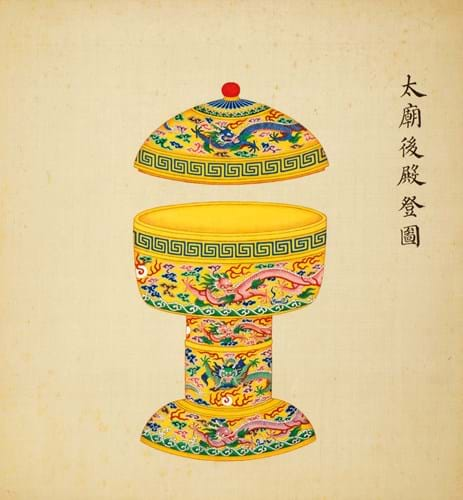
Twelve ink, colour and gilt on silk paintings from one of the copies of the Huang Chao Li Qi Tu Shi are for sale at Woolley & Wallis on November 12-13 estimated at £30,000-50,000.
The Huang Chao Li Qi Tu Shi (The Illustrated Regulations for Ceremonial Paraphernalia of the Present Dynasty) serves as a record of the Qianlong emperor’s passion for a rigid ritualised court life.
The book consists of six parts – ceremonial vessels, scientific equipments, dress, musical instruments, insignia, and weaponry – and contains more than 1300 leaves of illustrations and explanatory texts, each part of a desire to regulate the codes and procedures of the court.
As many as 27 court painters and calligraphers worked on the project between 1750-59 before the manuscript was edited and finally printed by the Palace Publications Office in the Wuying Palace in 1766. Ultimately seven copies were produced and stored in libraries across the empire – including the version kept in the Wenyuan Pavilion library in the Yuanmingyuan (Old Summer Palace), elements of which are held in various major museums in the UK and Ireland.
Twelve ink, colour and gilt on silk paintings from one of the copies of the Huang Chao Li Qi Tu Shi are for sale at Woolley & Wallis in Salisbury on November 12-13.
Depicting ceremonial ceramic vessels (here a yellow-ground archaistic stem bowl and cover or dou for use at the altar), by repute they were once part of the collection of the Victorian soldier Captain William Gordon Chalmers (1835-68). Estimate £30,000-50,000.







